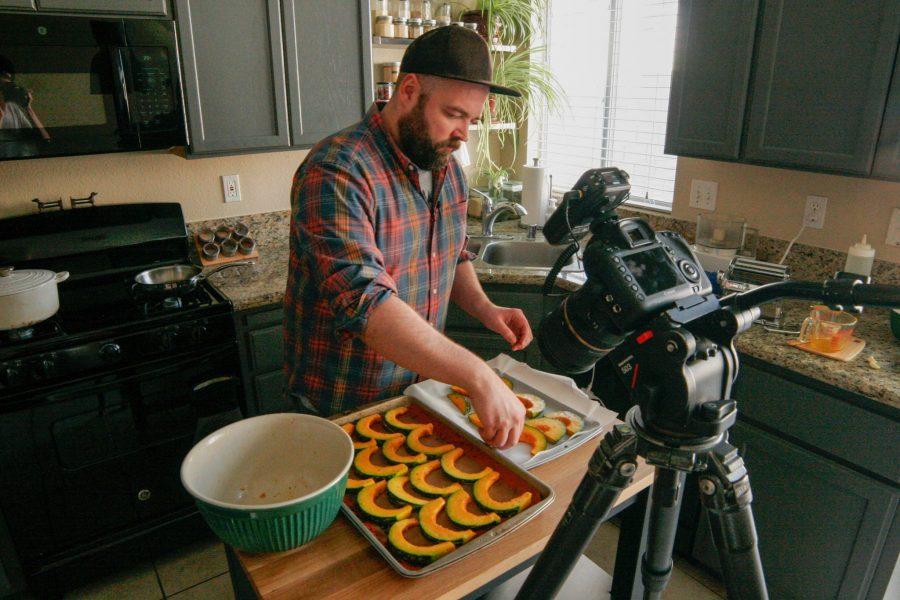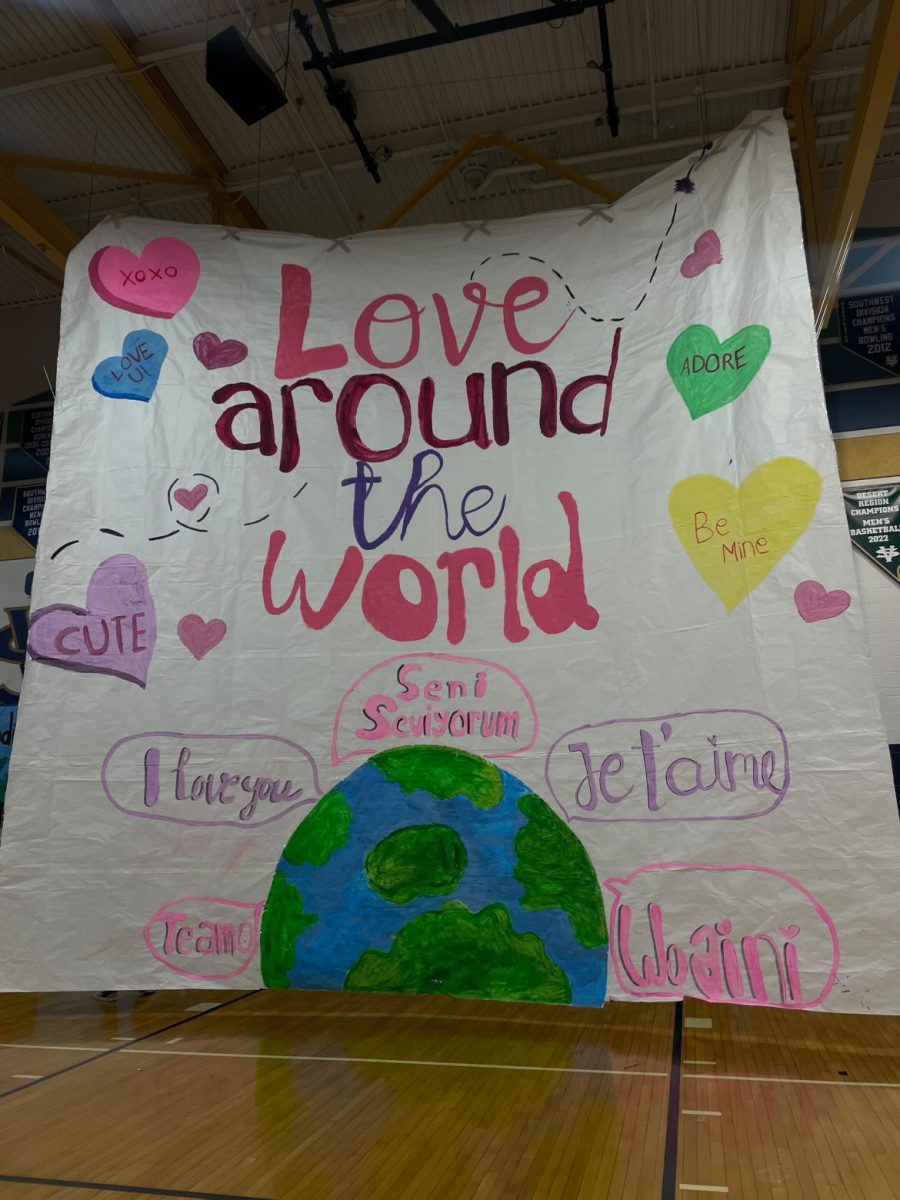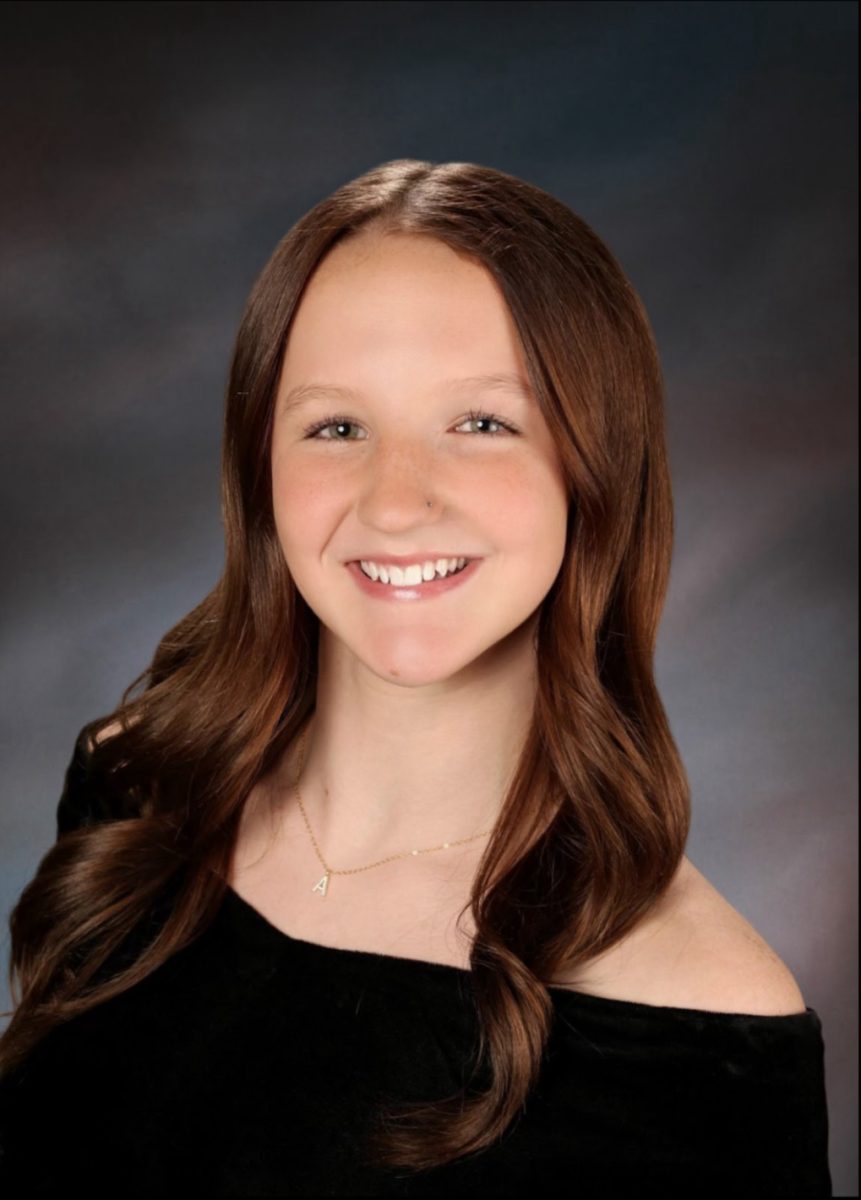Meat sizzled on grills across the nation. Hamburgers, steaks and hot dogs were ravaged as America celebrated its founding. As friends and family devoured the animal kingdom itself, Michael Monson picked up an imitation crab cake. Repulsed by the nation’s meat eating culture, Monson turned his attention toward a new diet: veganism.
Outside of teaching Advanced Placement English and imaginative writing, Monson works on his YouTube channel, “Monson Made This,” which focuses on vegan cooking.
The channel’s roots began on Monson’s Instagram page, which he started in July 2016. Featuring dozens of vegan foods, Monson has released more than 200 posts of his culinary creations. The transition to YouTube came about a year later in September 2017.
“I needed a creative outlet and was beginning to go vegan, so my friend said ‘Why don’t you make an Instagram page?’” Monson said. “I realized it was a perfect way to be creative and explore this lifestyle.”
Although he kept his pages a secret for a while, Monson’s friends soon found the Instagram page and encouraged him to create a YouTube channel.
The vegan cooking channel features more than 20 videos and has accumulated nearly 600 subscribers in the four months since its inception. In addition to his YouTube channel, Monson created the website monsonmadethis.com, which gives viewers bundles of information about vegan foods including more than three dozen recipes, video tutorials, and information on the vegan lifestyle.
Another thing found on the website is Monson’s story of his transition to becoming vegan.
“I went to the doctor and was diagnosed pre-diabetic,” Monson said.
In an effort to stop the progression of diabetes, Monson was forced to alter his lifestyle.
“He told me to cut out sugars and carbs so I lose weight. Things like bread, dairy and processed foods had to be cut out,” he explained.
Three months into the Paleo Diet, Monson returned for more blood work and got disappointing results..
“I was no longer pre-diabetic, but now I had high cholesterol. I needed to change my diet once again.”
In fear of being on medication for the rest of his life, Monson looked elsewhere for a solution. For a short period of time, he tried a vegan diet in college, before turning back to bacon.
Ironically, Monson made the switch on a day famous for barbecue. On July 4, 2016, Monson made the transition to veganism. The transition proved successful: three months and more blood work later, Monson was healthy again. The switch to this lifestyle wasn’t what kept him in it however.
“They say if you’re doing it for health reasons, you won’t stay.” Monson said. “As I was watching recipes and vegan videos to learn how to live in that lifestyle, I got to see things like slaughterhouse videos and the mistreatment of animals. I went down the rabbit hole.”
Monson turned his newfound interest into a tool. The channel is now used not only as a creative outlet, but a sort of message for those who want to get into the lifestyle themselves. Monson is also the club advisor to the school’s vegan and vegetarian club.
“I’ve found many resources through his channel,” Allison Kray, president of the vegan and vegetarian club, said. “It’s useful to see his take on things and get inspiration from it. It’s a great resource for vegans and non vegans to know there are ways to make the food as good as other options.”
Creating recipes that are easy to make and affordable, Monson wanted to show others that the transition isn’t as difficult as many proclaim.
“Channels like Mr. Monson’s are really important to making veganism bigger,” said Zea Stoner, Vice President of the Vegan and Vegetarian Club. “With channels like his, you can see that change is coming.”
Monson also thinks his channel is important in showing that veganism isn’t as difficult as most think.
“I don’t think it’s difficult to be vegan after a while, but the selection isn’t as wide as with other things” Monson said. “You can go to niche restaurants and stuff but that’ll be really expensive. So the solution is to cook your own food.”
According to a study published by “Vegetarianism in America,” a magazine dedicated to vegetarian and vegan lifestyles only 3.2 percent of Americans are vegetarians, and an even smaller 0.5 percent of those are vegans who cut animal products out of their lifestyle altogether.
This limitation in not only food, but goods that use animal products in some ways such as leather belts and shampoos makes the lifestyle more selective in nature. Buyers beware becomes a vegans motto, making many look to clever alternatives.
“My favorite and go-to recipe is a cheese-sauce made out of potatoes and carrots,” Monson said. “It goes well with nachos, mac-and-cheese, tacos and everything really”
The recipes crafted in his videos range from celebrity creations to personal crafts made by Monson himself. Credits to original creators are always given in the video description or the video itself, with links to the originals.
Despite his successes so far, Monson said he isn’t sure of where the future will take him. The channel began as a tool turning his new vegan lifestyle into a creative outlet. Becoming YouTube famous was never a part of the picture, but rather the journey.
“Ideally you would like anything you make to give you money, but the channel is small so I don’t have any advertisements yet,” Monson said. “I’m just treating it as a fun little project right now…we’ll see where the future takes me.”







